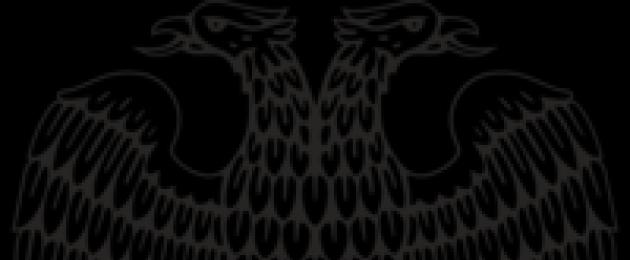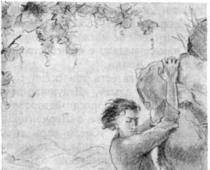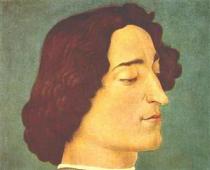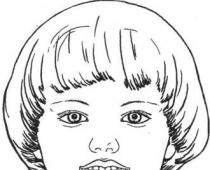Ganetsky, Jakub (real name Yakov Stanislavovich Furstenberg) (03/15/1879, Warsaw - 11/26/1937, Moscow) - Polish and Russian revolutionary, Soviet statesman. In 1896 he joined the Social Democracy of the Kingdom of Poland and Lithuania (SDKPiL). From 1901 he studied in Germany at the natural faculties of universities. In 1902 he was arrested in Berlin for distributing illegal literature and expelled from Prussia. An active participant in the Revolution of 1905-1907 in Warsaw, he worked closely with F. E. Dzerzhinsky. Member of the Main Board of the SDKPiL in 1903-1909. Participant of the IV Congress of the RSDLP (see Russian Social Democratic Labor Party), in 1906. In 1906, one of the organizers of the prison break of R. Luxemburg and J. Tyszki. He was arrested in 1906 and 1907, and escaped from exile twice. Since 1908 - member of the Central Committee of the RSDLP. Since 1914 - one of the leaders of the left wing of the SDKPiL, a Bolshevik, since 1915 - a member of the foreign board of the Central Committee of the SDKPiL. He signed the manifesto of the Zimmerwald Conference of 1915, which he was unable to attend. G. was an employee of the Institute for the Study of the Causes and Consequences of the World War (Denmark) created by A. Parvus. From 1915 he was director of the company Handelsog Export - Compagniet Astieselskab, of which Parvus was a shareholder, as well as the company Fabian Klingsland. In January 1917 he was expelled from Denmark and lived in Sweden. Using his international connections, he participated in organizing the release of V.I. Lenin in 1914 from imprisonment in Austria-Hungary and his arrival in Russia in 1917. He was suspected of financing the Bolsheviks through the companies in which he worked. Since April 1917, member of the Foreign Bureau of the Bolshevik Central Committee. In August 1917 - participant in the 3rd Zimmerwald Conference in Stockholm. Since November 1917 - member of the board of the People's Commissariat of Finance, commissioner and, since December, manager of the State Bank of the RSFSR (see Russian Soviet Federative Socialist Republic). Participated in negotiations on the conclusion of the Brest Peace of 1918, the Riga Peace of 1921, the signing of the Kars Treaty of 1921. In 1920-1922 - trade representative in Latvia. Delegate to the 8th Congress of the RCP(b). In 1920 and 1923-1930 - member of the board of the People's Commissariat of Foreign Trade, in 1921-1923 - member of the People's Commissariat of Foreign Affairs. In 1930-1935 he was a member of the Presidium of the Supreme Economic Council of the RSFSR. In 1932-1934 - member of the board of the People's Commissariat of Education. In 1935-1936 - head of the Department of Circuses and Parks of Culture and Recreation of the Mosconcert. In 1935-1937 - director of the Museum of the Revolution in Moscow. Shot.
Works: F. Dzerzhinsky. Life and activity. M., 1926.
Lit.: Figures of the Union of Soviet Socialist Republics and the October Revolution. Autobiographies and biographies. M., 1989; Popova S.S. Between two revolutions. Documentary evidence of the events of the summer of 1917 in Petrograd (according to French and Russian archival sources). M., 2010; Investigative case of the Bolsheviks. M., 2012; Sobolev G.L. Secret ally. Russian Revolution and Germany. St. Petersburg, 2009; Shubin A.V. The Great Russian Revolution: from February to October 1917. M., 2014. A.V. Shubin.
Real name: Furstenberg
Acting Chief Commissioner of the People's Bank of the RSFSR in November 1918 - January 1920.
Born in 1879 in Warsaw in the family of an industrialist.
Education
He studied at the Faculty of Science at the University of Berlin for two semesters, then at the universities of Heidelberg and Zurich.
Labor activity
1896 - joined the ranks of the Social Democracy of the Kingdom of Poland (SDKP).
1901 - left for Germany.
Before the February Revolution of 1917, he lived mainly abroad. He took part in the work of the Berlin section of the Bund (General Jewish Labor Union in Lithuania, Poland, Russia). He was repeatedly arrested and deported. Escaped from links. Organized the release from prison (including escapes) of famous Social Democrats.
As an active member of the Krakow Union for Assistance to Political Prisoners, J. S. Ganetsky in 1914 contributed to the release of V. I. Lenin from prison in Nowy Targ and his move to Switzerland.
He was a member of the Foreign Collegium of the Central Committee of the SDKPiL.
After the February Revolution, Ya. S. Ganetsky was a liaison between V. I. Lenin and the Russian Bureau of the Central Committee of the RSDLP (b), participated in organizing the return of V. I. Lenin and other Russian Social Democrats to Russia. He headed the investigative commission of the Central Committee of the RSDLP (b) in the case of the provocative activities of former party member R.V. Malinovsky. He came to Russia after the October Revolution.
December 1917 — Y. S. Ganetsky was appointed assistant to the Chief Commissioner of the State Bank.
October 1918 - approved by the comrade (deputy) of the Chief Commissioner of the People's Bank of the RSFSR, and in November, by order of the People's Bank, the Chief Commissioner of the Bank, G. L. Pyatakov, entrusted Ya. S. Ganetsky with “temporary performance of the duties of the Chief Commissioner.”
Ya. S. Ganetsky remained acting Chief Commissioner of the People's Bank of the RSFSR until the abolition of the Bank in January 1920.
1937 - was repressed.
1954 - posthumously rehabilitated.
Russia
RSFSR
USSR
Jakub Ganetsky(real name Yakov Stanislavovich Furstenberg, party pseudonyms: Henry, Cuba, Mikola, Driver; March 15, Warsaw - November 26) - Polish and Russian revolutionary, Soviet statesman.
Participation in the social democratic movement
Born in 1879 in Warsaw into the family of a wealthy merchant and industrialist (Polonized Jewish family). According to the book by N. Berberova<<Железная женщина>>, the family was related to A. Parvus. As a high school student, he was a member of an illegal student group in Warsaw and was expelled from the 6th grade. Since 1896 school at the Piotrków gymnasium, became acquainted with Marxist literature, and conducted social democratic propaganda among workers and students. In the city he joined the ranks of the Social Democracy of the Kingdom of Poland and Lithuania (SDKPiL). After graduating from high school, in 1900-01 he served as a volunteer in the infantry. regiment in Piotrkow. In 1901 he left for Germany. From the autumn of 1901 he studied at the Universities of Berlin, Heidelberg and Zurich. Since 1901 member of SDKPiL. One of the organizers and member of the Main Board of Social Democracy of the Kingdom of Poland and Lithuania, a close associate of F. Dzerzhinsky, together with him participated in the 2nd Congress of the RSDLP from Polish Marxists, then a participant in the 4th, 5th and other congresses of the RSDLP. In February 1902 he was arrested in Berlin for receiving transport of revolutionary literature from Paris and expelled from Prussia. In 1903-1909 was one of the leaders of SDKPiL. Participant in the revolution in Warsaw, member of the Central Committee of the RSDLP. He was a member of the Russian Bureau of the Central Committee of the RSDLP in 1908-1910.
He was repeatedly arrested and deported. Escaped from links. Organized the release from prison (including escapes) of famous Social Democrats. He was a member of the Foreign Collegium of the Central Committee of the SDKPiL.
Role in the Russian Revolution
In the summer of 1912, he organized Lenin's move from France (Lenin lived in Paris) to Austria-Hungary, where Lenin settled in Krakow, and became his closest confidant and assistant. There are suspicions that it was through Ganetsky that Lenin began to establish connections with the military and political authorities of Austria-Hungary, wanting to put their hatred of Russia at the service of the goals of the socialist revolution in the Republic of Ingushetia. On the eve of the First World War, from March Ganetsky lived with Lenin in the town of Poronin on the Russian-Austrian border, and when, after the outbreak of the First World War, the local gendarme arrested Lenin as a subject of Tsarist Russia on suspicion of espionage, then as an active member of the Krakow Assistance Union for Political Prisoners, Ganetsky facilitated his release from prison in Nowy Targ and his move to Switzerland, with the help of the prominent Austrian social democrat Victor Adler, explaining to the police and military officials of Austria-Hungary that Lenin was the worst enemy of the tsarist government and an active organizer of strikes in Russia.
In the same year, he became the executive director of the export-import company “Fabian Klingsland” created by Parvus, and the co-owner of the company was Ganetsky’s older brother, Heinrich Ganetsky, and its representative in St. Petersburg was Ganetsky’s cousin Evgenia Mavrikievna Sumenson.
Having settled in Copenhagen in June 1915, in August 1915 he became an employee of the Institute for the Study of the Social Consequences of War, created by Parvus in Denmark (Institute for the Study of the Social Consequences of War, Copenhagen: in Danish - Institut til Forskning af Krigens sociale Følger), located on Østerbrogade street in the Østerbro district. Maintains close ties with other employees of this Institute - Ekaterina Groman, Vladimir Perazich, Georgy Chudnovsky, Arshak Zurabov, Moisey Uritsky.
At the same time, Parvus makes Ganetsky the director of the Trading and Export Company he created (the official name according to the trade register in Danish is Handels- og Eksportkompagniet AIS, in English - Trading and Export Company). The company that Parvus established in Copenhagen had its own network of agents who traveled between Scandinavia and Russia. Since the beginning of the war, the company supplied Russia with goods from neutral Denmark, which were in acute shortage during the war years, sold them there, and immediately used all the proceeds to finance revolutionary organizations in Russia, printing underground leaflets and proclamations. In addition to trading operations, these agents maintained contact with various underground organizations and strike committees, trying to coordinate their actions and turn disparate actions into a single movement. Through catalogs of goods offered, Parvus' agents transmitted secret information written in invisible ink, including Lenin's instructions from Zurich.
In Copenhagen, Ganetsky lives in an expensive villa at Martinsvej 9 B, next door to the villa of Parvus himself, which was located at Vodroffsvej 50 B.
In January 1917, he was detained by Danish police on suspicion of illegal military smuggling and expelled from the country. He was forced to urgently move to neighboring Sweden and settled in Stockholm. On March 31, during Lenin’s passage through Stockholm, he was appointed by him as a member of the Foreign Bureau of the Central Committee (together with Vorovsky and Radek) and, thus, together with Radek and Vorovsky, Lenin left him in Stockholm under the guise of the Foreign Bureau of the Central Committee for the uninterrupted supply of funds from Parvus to strengthening Bolshevik organizations and the press in Russia, as well as for conducting Bolshevik propaganda to the West.
From Stockholm itself, on May 1, 1917, together with Radek and his wife Rosa, he moved to the fashionable suburban area of Neglinge and settled in the same house with the Radeks. Ganetsky's telegraph address in Sweden, to which Lenin and other leaders of the Bolshevik Party sent him telegrams from Petrograd, was: Saltsjobaden, Neglinge bei Stockholm.
In July 1917, Yakuba’s cousin and his business representative in Petrograd, Evgenia Mavrikievna Sumenson, who on behalf of Ganetsky conducted business in Russia, including with the Swiss company Nestle, was arrested in July 1917 on suspicion of sending German money to the Bolsheviks, acting through an official representative of Nestle in Russia Yuri Izrailevich Fridlyand. In October 1917 she was released on bail. The further fate of Ganetsky’s relative Sumenson is unknown; it is unknown when she died and where she was buried. According to some reports, in New York, where she moved and settled among the Jewish community of New York.
A week after the victory of the October Revolution, Ganetsky arrived in Russia and was appointed Deputy People's Commissar of Finance and Governor of the People's Bank of the RSFSR. He was part of the Soviet delegation at the negotiations in Brest-Litovsk in 1918.
During the war with Poland, he participated in peace negotiations with Poland, later was a member of the board of the Central Union and a member of the boards of Narkomfin, Vneshtorg and the People's Commissariat of Foreign Affairs of the USSR (sent there by F. Dzerzhinsky to establish trade with other countries, where he had great connections in circles social democratic parliamentarians).
In 1920-1922 - Trade representative of the RSFSR in Latvia. On behalf of the RSFSR, he signed the Treaty of Kars on October 13, 1921 in the city of Kars. In 1923-1930 - one of the leaders and member of the board of the People's Commissariat of Foreign Trade of the USSR. In 1930-1935 was a member of the Presidium of the Supreme Economic Council of the RSFSR. In 1932-1935. as head of the State Association of Music, Variety and Circus. 1935-1936 - Head of the Department of Circuses and Parks of Culture and Recreation of the Mosconcert. According to a number of literary scholars, his personality in this position served as the prototype for the character named Rimsky, introduced in Mikhail Bulgakov’s novel “The Master and Margarita.” From April 25 he was director of the Museum of the Revolution in Moscow. On July 18, 1937, he was arrested by the NKVD in his apartment in the Government House on the embankment (Serafimovicha St., 2) and executed on November 26, 1937. In 1954, he was posthumously rehabilitated.
Marriage and family
He was married to Ganetskaya Giza (Gitley) Adolfovna (1889-1937). She was arrested two days after Yakub's arrest, on July 20, 1937. She was sentenced and executed on December 10, 1937, 2 weeks after her husband was shot.
Their son, Stanislav Yakovlevich Ganetsky (1913-1938), a 4th year student at the Red Army Air Force Academy, was arrested on December 14, 1937. Sentenced and executed on June 14, 1938.
In 1954 they were posthumously rehabilitated.
Daughter - Ganetskaya Khana (Khanka) Yakovlevna was also repressed, sentenced to 10 years in prison, spent a total of 18 years in camps, but managed to survive and after rehabilitation in 1956 returned to Moscow.
Bibliography
- Ganetsky Y. “Memories of Lenin” - M., 1933.
- Idashkin Y. “The Mystery of the Hut in Razliv” - Ekaterinburg: “Stone Belt”, 1992.
- A. Arutyunov “Lenin’s dossier without retouching” - M.: “Veche”, 1999. 656 with ISBN 5-7838-0530-0
- "Vladimir Ilyich Lenin: Biographical Chronicle", vol. 4, pp. 31, 35.
- Haxthausen, Tørk - Titel: Dr. Helphand. Rejsende i revolution. Forlag: Gyldendal - Udgivet år: 1986 - Antal sider: 507
Links
- Fateh Vergasov “The Ganetsky Case”: who financed Lenin?
- Yakov Stanislavovich Ganetsky (real name - Furstenberg) Acting Chief Commissioner of the People's Bank of the RSFSR in November 1918 - January 1920.
| Heads of the Central (State) Bank of Russia and the USSR | ||
|---|---|---|
| Managers State Bank Russian Empire (1860-1917) |
Stieglitz Lamansky Tsimsen Zhukovsky Pleske Timashev Konshin Shipov |  |
| Chief Commissioners People's Bank of the RSFSR (1917-1920) |
Pestkovsky Obolensky Pyatakov Spunde (acting) Popov Pyatakov Ganetsky(and about) | |
| Chairmen of the Board State Bank USSR (1921-1991) |
||
Yakov (Yakub) Ganetsky(real name: Yakov Stanislavovich Furstenberg; born March 15, 1879 in Warsaw; executed November 26, 1937) - Polish and Russian revolutionary, leader of the Soviet state.
Yakov Stanislavovich came from the family of a wealthy Polish industrialist of Jewish origin. While still in the 6th grade, he was expelled from the gymnasium for participating in an illegal student circle in Warsaw, and in 1896 he entered the gymnasium of the city of Piotrkow and in the same year became a member of the SDKPiL (Social Democracy of the Kingdom of Poland and Lithuania).
In 1901, Fürstenberg went to Germany and then Switzerland and studied at the universities of Berlin, Heidelberg and Zurich. Being a close associate of Felix Edmundovich Dzerzhinsky, he became one of the organizers of SDKPil and a member of its Main Board. In the winter of 1902, he was arrested and expelled from Prussia for receiving a shipment of revolutionary literature from Paris. Jakub Hanecki took part in the 1905 revolution in Warsaw and was one of its leaders. In 1907 he became a member of the Central Committee of the RSDLP. Until 1910, Fürstenberg was arrested several times and sentenced to deportation. During this period, he was involved in the release of imprisoned revolutionaries or organizing their escapes.
In the 1910s, Yakov Stanislavovich became close to the leader of the Russian revolutionary movement, Lenin, who entrusted him as a confidant with establishing connections with the Austro-Hungarian political and military authorities in order to use their hostility towards the Russian Empire in the interests of implementing a socialist revolution in Russia.
In 1914, Ganetsky achieved the release of Lenin from the Polish prison in Nowy Targ, where he was imprisoned on suspicion of espionage for Tsarist Russia, and helped him move to Switzerland. During the First World War, Jacob Fürstenberg was an ally of Alexander Gelfand (pseudonym: Parvus) and the executive director of the company Fabian Klingsland founded by him, which was engaged in export-import operations in Denmark and Sweden and, through German payments, played a key role in financing revolutionary activities aimed at overthrow of the autocracy.
After the victory of the Great October Socialist Revolution of 1917, Vladimir Ilyich Lenin invited Ganetsky to Russia and appointed him deputy people's commissar of finance and manager of the People's Bank of the RSFSR. In 1918, Yakov Stanislavovich was one of the participants in the negotiations in Brest-Litovsk. In the period from 1923 to 1930, Fürstenberg served as one of the leaders of the People's Commissariat for Foreign Trade of the USSR, and from 1930 to 1935 he was a member of the Presidium of the Supreme Council of the National Economy of the RSFSR. From 1932 to 1936, he held various positions: he was the head of the State Association of Music, Variety and Circus, the Directorate of Circuses and Parks of Culture and Recreation, and director of the Moscow Museum of the Revolution.
- In contact with 0
- Google+ 0
- OK 0
- Facebook 0








